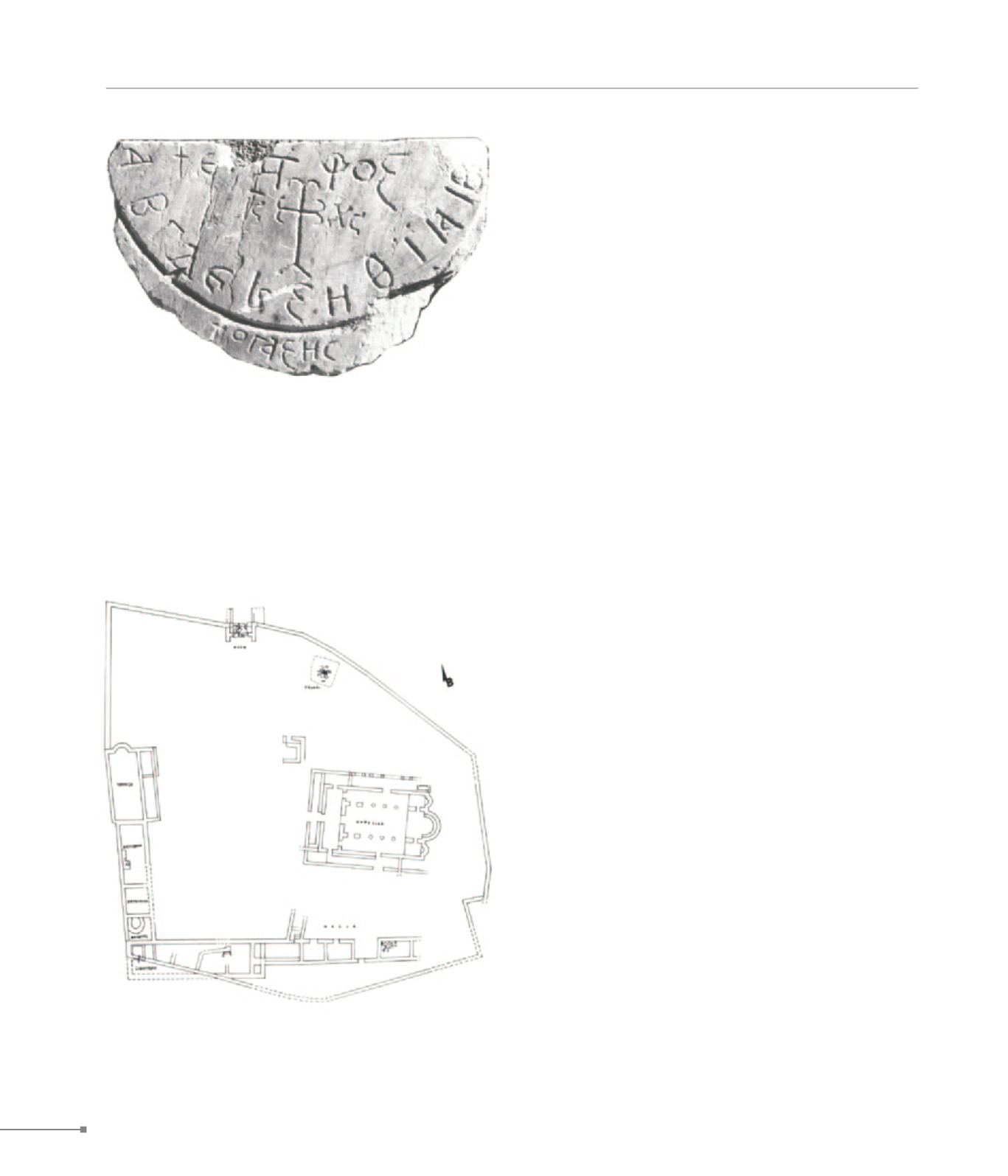
Kipia.
Paliochori. Vranokastron.
MACEDONIA
102
39. Paliochori, Saint George of Vranokastron monastery, ground plan of
the complex (Παλιοχώρι, μονή Αγίου Γεωργίου Βρανοκάστρου, κάτοψη
του συγκροτήματος)
39. Paliochori, Saint George of Vranokastron monastery, sun dial
(Παλιοχώρι, μονή Αγίου Γεωργίου Βρανοκάστρου, ηλιακό ρολόι)
37.
Kipia
.
At the Kainartza site, off the Thessaloniki-Kavala national road, a
three-aisled Early Christian basilica with narthex has been exca-
vated and Early Christian burials and epitaph inscriptions have
been revealed. After the destruction of the basilica, above the
eastern part of its nave a small, aisleless church was founded.
38.
Palio Chortokopi
.
At close proximity to the remains of Palio Chortokopi’s 4th-6th
c. defensive walls are preserved surrounding architectural rem-
nants, possibly of an Early Christian basilica.
39.
Paliochori
.
Vranokastron.
At the site of Kastro, a short distance from Paliochori, survives
a fortress dating from the 12th or 13th-14th c, featuring an outer
enclosure, a citadel with towers and a donjon. Excavation has
revealed remains of a monastic complex, known as the monas-
tery of Saint George of Vranokastron. The conventual church
was originally a three-aisled basilica with a portico on the N
side, probably built in the 11th c. The narthex belongs to a sec-
ond construction phase, and the ambulatory surrounding the
three remaining sides of the conventual church was erected in
a third phase. In the final phase the ambulatory was divided into
sections. The building material included spolia, probably from
Philippi. Among structures a portal, cells, a refectory, kitchens,
a bakery with an oven, a kneading room, and a well surrounded
by a stone pavement have been identified. The monastery was
abandoned and fell into disrepair, possibly in the 18th c. or a
little earlier. At the site of Paliokastro there is a Pre-Roman de-
fensive wall surrounding the architectural remains and ruins of
an Early Christian basilica.


